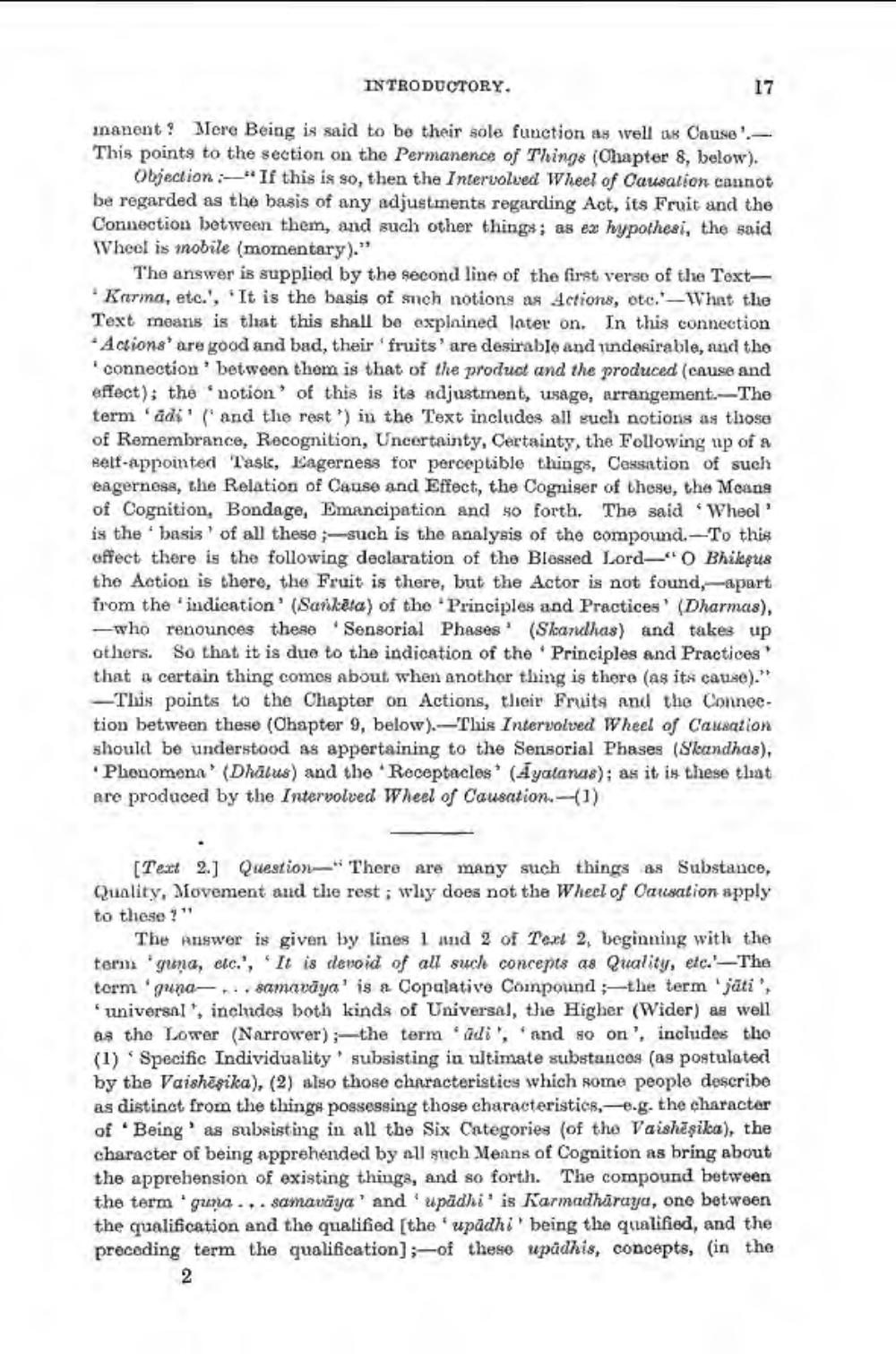________________
INTRODUCTORY.
17
inanent ! Mere Being is said to be their sole function as well as Cause'.This points to the section on the Permanence of Things (Chapter 8, below).
Objection :-"If this is so, then the Intervolved Wheel of Causation cannot be regarded as the basis of any adjustments regarding Act, its Fruit and the Connection between them, and such other things; as ex hypothesi, the said Wheel is mobile (momentary)."
The answer is supplied by the second line of the first verse of the TextKarma, etc.', 'It is the basis of sneh notions as Actions, otc.'- What the Text means is that this shall be explnined later on. In this connection * Actions are good and bad, their fruits' are desirable and indesirable, and the
connection between them is that of the product and the produced (cause and effect); the notion of this is its adjustment, usage, arrangement.--The term 'ads' and the rest ') in the Text includes all such notions as those of Remembrance, Recognition, Uncertainty, Certainty, the Following up of a self-appointed Task, Eagerness for perceptible things, Cessation of such eagerness, the Relation of Cause and Effect, the Cogniser of these, the Means of Cognition, Bondage, Emancipation and so forth. The said Wheel' is the basis of all these such is the analysis of the compound.-To this affect there is the following declaration of the Blessed Lord—“Bhikogus the Action is there, the Fruit is there, but the Actor is not found,--apart from the 'indication' (Sanketa) of the Principles and Practices' (Dharmas), - who renounces these Sensorial Phases (Skandhas) and takes up others. So that it is due to the indication of the Principles and Practices that a certain thing comes about when another thing is there (as its cause)."
-This points to the Chapter on Actions, their Fruits and the Connec. tion between these (Chapter 9, below). This Intervolved Wheel of Cauation should be understood as appertaining to the Sensorial Phases (S'leandhas),
Phenomena' (Dhalus) and the 'Receptacles (Ayalanas); as it in these that are produced by the Intervolved Wheel of Causation.-(1)
[Text 2.] Question " There are many such things as Substance, Quality, Movement and tlie rest; wliy does not the Wheel of Causation apply to these ?"
The answer is given by lines 1 and 2 of Text 2, beginning with the term 'guna, etc.', 'It is devoid of all such concepts as Quality, etc. The term guna- samavāya' is a Copalative Compound the term "jäti', * universal', includes both kinds of Universal, the Higher (Wider) as well as the Lower (Narrower) ;-the term 'adi', and so on', includes the (1) Specific Individuality subsisting in ultimate substances (as postulated by the Vaishēsika), (2) also those characteristics which some people describe as distinct from the thinge possessing those characteristics,-.g. the character of Being as subsisting in all the Six Categories (of the Vaishëşika), the character of being apprehended by all such Means of Cognition as bring about the apprehension of existing things, and so forth. The compound between the term guna ... samavāya' and 'upādhi' is Karmadharaya, one between the qualification and the qualified [the upādhi' being the qualified, and the preceding term the qualification) ; -of these upådhis, concepts, in the




